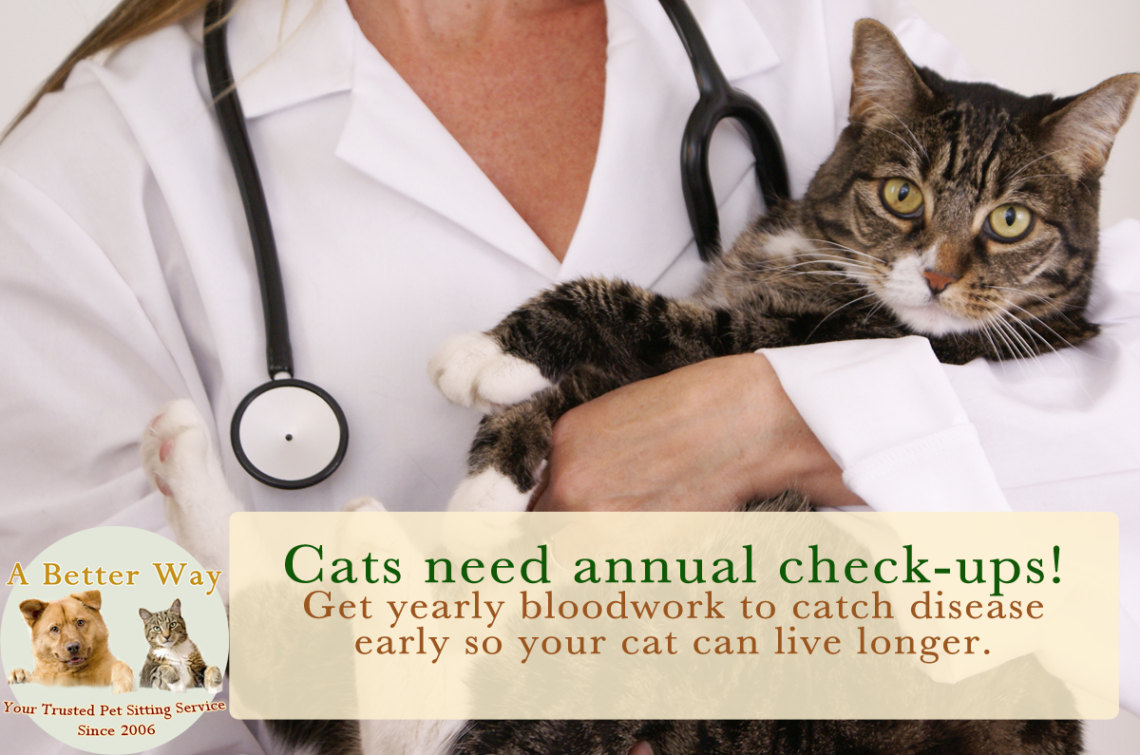You hate taking your cat to the vet, and your cat hates it even more. From trying to squeeze your cat into their carrier to the long, nervous wait in the vet’s office, checkups are no picnic for you and your feline. Though it’s not easy, it’s oh-so-necessary to helping your cat live a long, healthy life. August 22nd has been named National Take Your Cat To The Vet Day by the American Association of Feline Practitioners because over half of all pet cats in America do not get annual checkups. If your cat is one of them, don’t feel guilty – but please do pick up the phone and schedule an appointment as soon as possible.
Why All Cats Need Annual Vet Checkups
Cats may be more independent than dogs, but they still need the same regular medical care. Our feline family members are less likely to appear in pain, and may only show very subtle signs of discomfort, if any at all, when they are sick or injured. Regular checkups allow you to catch minor illnesses before they become serious.
Kidney failure is the leading cause of death in cats. Symptoms include increased thirst and urination, weakness and weight loss. However, by the time these symptoms appear, your cat is already suffering from severe kidney damage and your cat’s life expectancy has already been greatly reduced, even with treatment. Yearly blood tests, twice-yearly for senior cats, is the best way to catch kidney disease in its early stages.
What Your Vet Should Check For Each Year
When you get to your vet’s office, be prepared with any questions about your cat’s health and behavior – you may want to write them down so you do not forget to ask during your visit.
Your vet will weigh your cat and palpate their torso to determine if they are overweight. They may check your cat’s ears and eyes, and examine their mouth to see if your cat has signs of dental disease.
You can also expect your vet to check your cat’s vaccination history and give your cat any needed shots so they stay up-to-date. Even indoor cats need vaccinations, plus a vet-prescribed heartworm/intestinal parasite preventative, usually in the form of a chewable pill, administered monthly at home.
How To Make Vet Visits Less Stressful
Your cat’s carrier should be left out at all times, not suddenly dug out of the closet the morning of your vet appointment.
Fill your cat’s carrier with a thick blanket, catnip, toys and treats – anything to help your kitty see it as a sanctuary. Don’t place your cat inside; allow them to explore it on their own, preferably at least a few weeks before their appointment.
Practice handling your cat, looking inside their mouth, and massaging their paws, ears and stomach while you pet them. Don’t push your cat’s limits, simply get them used to gentle handling that they’ll likely experience at the vet’s office. You can also practice wrapping your cat in a towel so they won’t mind being swaddled for examinations, vaccines and bloodwork.
Keep in touch for more cat care tips from A Better Way Pet Sitting. Like us on Facebook so you won’t miss our updates!



No Comments